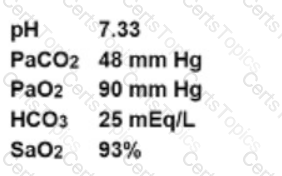Explanation: This is the nurse’s best initial response, as it expresses empathy, validates the patient’s feelings, and assesses the patient’s risk of suicide. Depression is a common and serious mental health condition that affects older adults, especially those living in nursing homes. Depression can cause persistent sadness, hopelessness, loss of interest, and suicidal thoughts or behaviors. The nurse should screen the patient for depression using a validated tool, such as the Patient Health Questionnaire (PHQ-9) 1, and ask about any suicidal ideation or plans. The nurse should also provide emotional support, education, and referral to appropriate resources for the patient.
B. “Those feelings should resolve when the medication you’ve started has a chance to take effect.”
This is not the nurse’s best initial response, as it dismisses the patient’s feelings, implies that the patient just needs to wait for the medication to work, and does not address the patient’s psychosocial needs. Antidepressants are one of the treatment options for depression, but they may take several weeks to show their full effect, and they may not work for everyone. The nurse should also explore other factors that may contribute to the patient’s depression, such as social isolation, loss of autonomy, chronic illness, or grief, and offer interventions that may help the patient cope, such as counseling, psychotherapy, cognitive-behavioral therapy, or social activities.
C. “I understand how you feel. We all get that way when we’re depressed.”
This is not the nurse’s best initial response, as it assumes that the nurse knows how the patient feels, minimizes the patient’s experience, and generalizes the patient’s condition. Depression is not a normal or inevitable part of aging, and it affects each person differently. The nurse should not compare the patient’s feelings to their own or to others, but rather acknowledge and respect the patient’s unique perspective and situation. The nurse should also avoid using words like “we” or “you” that may create a sense of distance or judgment, and instead use words like “I” or “me” that may convey a sense of empathy or rapport.
D. “Have you talked to anyone about what is bothering you?”
This is not the nurse’s best initial response, as it may sound like the nurse is trying to avoid listening to the patient, or that the patient is bothering the nurse with their problems. The nurse should not imply that the patient should talk to someone else, but rather show interest and willingness to listen to the patient. The nurse should also use open-ended questions that invite the patient to share more, such as “How are you feeling today?” or “What has been on your mind lately?” The nurse should also use active listening skills, such as nodding, paraphrasing, reflecting, or summarizing, to demonstrate understanding and engagement.






